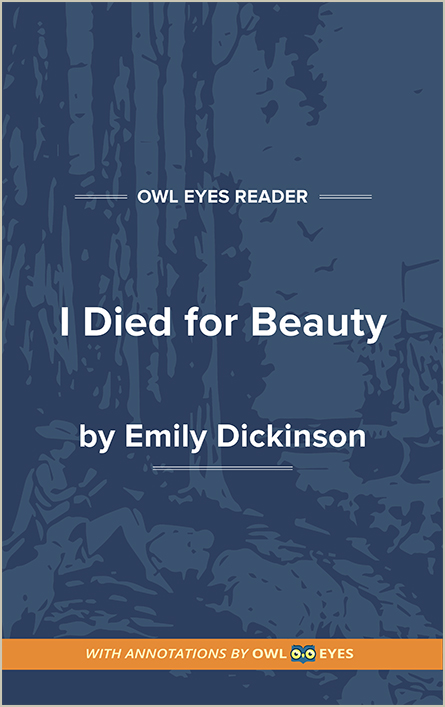- Annotated Full Text
- Literary Period: Realism
- Publication Date: 1890
- Flesch-Kincaid Level: 5
- Approx. Reading Time: 0 minutes
I Died for Beauty
“I Died for Beauty” was chosen to be a part of the first posthumous collection of Dickinson’s work. Although the poet instructed her sister Lavinia to burn the 1,800 poems she had written, Lavinia decided to preserve them in print. She enlisted the help of Mabel Loomis Todd and with the input of Dickinson’s mentor, T.W. Higginson, The Poetry of Emily Dickinson was published just four years after her death. “I Died for Beauty” explores many of the themes characteristic to Dickinson’s works: the inevitability of death, death as a natural part of life, and the cyclical quality of the natural world. The poem meditates on the relationship between “truth” and “beauty,” or art and knowledge, drawing inspiration from the Romantic period, specifically the famous poet John Keats and his “Ode on a Grecian Urn.” Though she took inspiration from this famous literary movement, Dickinson’s interpretation of these familiar concepts is strikingly different. With a tone that is both eerie and comforting, bold and quiet, Dickinson warps the conflict between truth and beauty to create a unique look at life, purpose, and death.
- Annotated Full Text
- Literary Period: Realism
- Publication Date: 1890
- Flesch-Kincaid Level: 5
- Approx. Reading Time: 0 minutes

